
IN 2024 THE PLATH INTELLIGENCE DAY WILL TAKE PLACE AT THE AOC EUROPE IN OSLO
The prestigious international security and defence event AOC Europe will take place this year in Oslo from 13 - 15 May. As every year, AOC Europe will bring together organisations and individuals from government, defence, industry and academia during the conference and exhibition to promote the exchange of ideas and information, and to present and discuss advances and trends in information-related intelligence and analysis technologies.
As a prelude to the event, PLATH again invites to the Intelligence Day, to which we now expect a lot of participants again after last year's record-setting edition. We are looking forward to gathering the community on the eve of the industry event AOC Europe in advance and to discuss the latest developments with the impulses of different expert contributions the two highly topical main topics of Artificial Intelligence and Software Defined Defense.
WE LOOK FORWARD TO WELCOMING YOU TO THE PLATH INTELLIGENCE DAY!
Agenda
Welcome coffee
Welcoming words
Dr. David Stupples und Andreas Schwolen-Backes
„Software Defined Defence – German Bundeswehr approach to resilient, agile ...
Oberst i.G. Dipl.-Inform. Michael Peter Jäger
Session 1
Software-defined Defense and AI – Operational Insights from Ukraine
Christopher Frenning, Microsoft
Software Defined Intelligence: Future AI-enhanced SIGINT scenarios
Sven Lüttich, PLATH
Software Defined Defence in context of multi-domain operations
Toni Liebschwager, Schönhofer
AI In SIGINT domain - From signal identification to operator support & system ta
Dr. Hendrik Lieske, SAAB/MEDAV
Coffee Break
of 30 minutes
Session 2
Changing the Game - Software Defined Defence
Dietmar Thelen, Hensoldt
In-Band Full-Duplex Radio Military Applications
Prof. Taneli Riihonen, FDF
Panel discussion with all speakers from sessions 1 and 2
Lunch Break
Session 3
SafeAI - Software framework f. the evaluation of AI applications in mil. systems
Dr. Markus Hosbach, IABG
Perspectives on connected EW
Philippe Schmeling, IBM
Using Speech Technologies in the Realms of Defense and Investigation
Paul Morris, Phonexia
Coffee Break
of 30 minutes
Session 4
How to deal with modern challenges of SatCom Monitoring, Analysis and Intelli...
Florian Woelke, Rheinmetall und Antoine Vignol, INNOSYSTEC
Learnings from project CESMO
Hauptmann René Raden and Marco Mehling, Bundeswehr
What it takes: Accelerating the mission cycle with Software and AI
Simon Pfeiffer, Helsing
Panel discussion with all speakers of sessions 3 and 4
Wrap up and closing words
Dr. David Stupples and Andreas Schwolen-Backes
End of PLATH Intelligence Day
Speaker

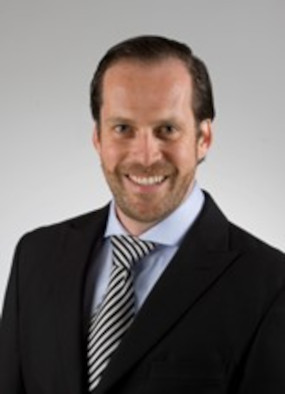

Marco Mehling
Lieutenant Colonel German Air Force (ret.)
Chair NATO SIGINT & EW Working Group (SEWWG)
Chief Engineer Electronic Warfare for System-of-Systems Concepts and Capabilities at Airbus Defence and Space
Lt. Col. (ret.) Marco Mehling is Chief Engineer Electronic Warfare for System-of-Systems Concepts and Capabilities at Airbus Defence and Space and a retired fighter pilot of the German Air Force. Prior to retirement from the military, he was the Director of Product Development at the Weapon System Support Team Combat Aircraft.
Marco joined the German Air Force in 1996. Having completed military jet training at Sheppard Air Force Base, Texas, Marco flew the Tornado ECR in the Suppression of Enemy Air Defence (SEAD) role for 17 years. In 2003, he became an electronic warfare officer, was subsequently involved in the development of new tactics, and became a flight commander and flight operations officer in 2006. After completion of Instructor Pilot and Weapons Instructor training, Marco became the commanding officer of the Operational Test and Evaluation Section of Fighter Bomber Wing 32 in 2010, where he evaluated new equipment under realistic combat conditions.
In September 2017, Marco transitioned to his civilian life in the defence industry, while remaining engaged as a Reserve Officer performing multiple weeks of active service each year. His flight experience includes more than 2300 hours in military jet aircraft.
Marco is an active member of several NATO groups to evolve future electromagnetic warfare interoperability capabilities, such as the implementation of Cooperative Electromagnetic Support Measures Operations (CESMO). He has been a member of the NATO SIGINT and Electromagnetic Warfare Working Group (SEWWG) since 2010 and currently holds the position of Chair Person.
Cooperative Electromagnetic Support Measure Operations (CESMO) Supporting Multi-Domain Electromagnetic Warfare Operations:
Cooperative Electromagnetic Support Measure Operations (CESMO), as defined in STANAG4658 and its associated Allied Engineering Documentation
Publication (AEDP) 13, is a NATO System-of-Systems (SoS) solution to enable near real time collaboration of Electromagnetic Spectrum
(EMS) sensors
across multiple domains. CESMO allows for rapid coordination, information exchange and data fusion in homogenous and heterogeneous network
architectures, to deliver information advantage at the speed of relevance. CESMO is a critical pillar of Electromagnetic Spectrum Operations
(EMO)
and Command and Control of Electromagnetic Warfare (C2 of EW). Additionally, CESMO offers such advantages as contributions to Time
Sensitive
Targeting (TST), updates to the Theatre Specific Electromagnetic Order of Battle (TS-EOB), and contributions to the Joint Intelligence,
Surveillance
and Reconnaissance (JISR) enterprise. By increasing Threat Situational Awareness (SA), CESMO enhances the survivability of coalition forces
and
supports military commanders and staff in gaining and maintaining information and decision advantage against adversaries.
This briefing will introduce CESMO, the concepts and ideas behind it, its current application, its interoperability with other data links, and its
future development.
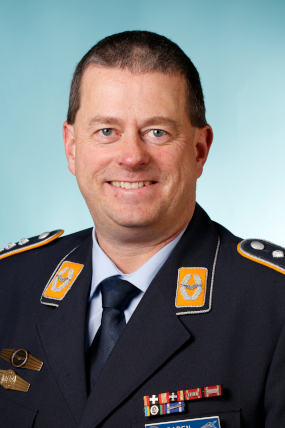
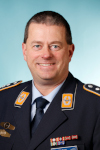
Captain René Raden
- Organizational position: Avionics Officer TORNADO OT&E
- Date of Birth: 26.05.1975
- Education: 2005 state-certified Technician of Electronics
2013 Bachelor of Engineering
Military career
- 07/94 German Air Force basic training/ basic service conscript
- 10/94 – 01/95 LwSichStff Hohn LTG 63, Air Security Police
- 01/95 – 09/03 Reconnaissance Wing 51 „Immelmann“, avionics technician
- 09/03 – 07/05 Technical School of the German Army / final qualification: state-certified Technician of Electronics
- 10/05 – 02/06 Officers' course
- 08/05 – 04/13 Technical Air Force School 3, Instructor and Avionics Officer BO-105 Instructor for Navigation, Radio, Secondary Radar und Weapon System of the BO-105; 2 times Support for the Uruguay Navy as engineering consultant BO-105 in Maldonado (Uruguay).
- since 05/14 TORNADO Operational Test & Evaluation Section
Professional Experience
- DEU SME CESMO (Cooperative Electronic Support Measure Operation)
- NATO SEWWG PROJECT TEAM CESMO, Lead
- STANAG 4658 CUSTODIAN
- DEU GAF OT&E representative at US Joint Staff Joint Fires Division Coordinated Implementation of Digitally-Aided Close Air Support, ECP-11 WG
- OCE BALTIC CESMO TRIAL 2017 and BALTIC CESMO TRIAL 2018
- POC CESMO/VMF/COP TIMBER EXPRESS 2017, 2018, 2019, 2020, 2021, 2022 and 2023
- Exercise participant BOLD QUEST 2015, 2017, 2018, 2019, 2021, 2022
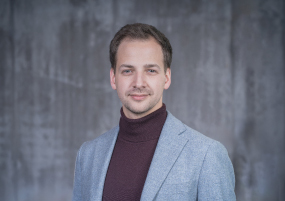

Simon Pfeiffer
Simon Pfeiffer is Associate Director at Helsing and responsible for software/AI-infrastructure across Helsing’s programmes in the Air Domain.
What it takes: Accelerating the mission cycle with Software and AI
Modern SIGINT and EW systems deliver unprecedented amounts of data. At the same time, evermore complex emitters populate the electromagnetic spectrum. In this environment, modern processing approaches, that leverage state-of-the-art software and data-driven algorithms, can strengthen situational awareness and freedom of action in the spectrum. They accelerate the mission-cycle, onboard as well as off-board in-between missions. To fully lift the potential of software-defined defence and AI, the technological and organisational setup needs to support this acceleration – and ensure, that learnings and data are fed-back into the continuous iteration and development of capabilities.


Dietmar Thelen, Dipl. - Ing., Colonel (of the reserve)
Member of the Hensoldt AG Executive Committee Head of Division Spectrum Dominance & Airborne Solutions Hensoldt Sensors GmbH
Experience background
- General & Programme Management (18 years): Managing Director (TLVS GmbH), Member Executive Board (RUAG, MBDA-D), C.O.O. (Odebrecht – EADS Defesa), Business Unit Head (RUAG), Programme Director (NATO AGS), Program Unit/Department Head (Airbus)
- Systems Engineering & Integration (14 years): Security & SW Engineer, Head of SW Engineering, Chief Engineer, Head of Engineering covering C4ISR & EW Systems, Space programmes and UAV Systems
- 7 large scale Space and Defence Programmes: C2IS Army (FüInfoSys H), SASPF, SARLupe, Galileo, NATO AGS, TLVS, Eurofighter
- Strategy incl. M&A cases, Business Development (3 years): CyberSecurity, Aerospace & Defence Industry
- International assignments (15 years): ITA, BRA, BEL, CHE, 4 multinational Joint Ventures
- Defence & Aerospace Industries (18 years): Airbus, MBDA, RUAG
- Public Sector (18 years): German Army, NATO, German NSA/BSI
- • Strategic Military background: Colonel (GS) of the Reserve, 17 years assignments at DEU MoD, 4 years NATO diplomat (Deputy General Manager NATO AGS Management Agency
Changing the Game: Software Defined Defence
Currently, our industry faces a paradigm shift. Historically, military technology is at the very forefront of innovation. By this, essential
supremacy over the commercial civil market could be established and maintained. While successful, recently with the advent of novel and more
interconnected solutions and systems, development cost and development effort increased dramatically, leading to highly complex systems that are
even more complicated and expensive to maintain.
With the tremendous progress in software and hardware technology combined with further accelerating levels of technical integration driven mostly by
the consumer market that technical leadership is tilting. For example, in surveillance, publicly accessible data sources can greatly improve data
quality. Furthermore, development cost and deployment time of such commercial systems is orders of magnitude smaller compared to in military
markets. Essentially, costs are split between millions of users, slashing prices dramatically. Finally, those solutions also tend to be much more
flexible. Consequently, government programs are outperformed dramatically on multiple levels.
To also benefit from these new opportunities, military customers seek for functionality faster and cheaper. They also strive for open standards and
interoperability between vendors. To ensure this, there is also a push to harmonize development environments.
HENSOLDT is answering the call by establishing a novel Hardware and Software architecture referred to as HSAC, the HENSOLDT Software Architectural
Concept. HSAC enables the “Develop Once, Deploy Everywhere” approach on a company-wide level. Harnessing containerization, we enable reuse of
functionality across technological domains and partners, making platform independence a reality, speeding up Development, Deployment, Integration
and Certification.
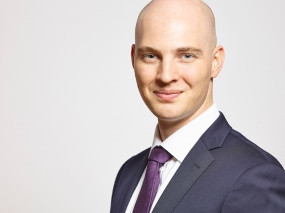

Philippe Schmeling
Head of the business areas Future Electronic Dominance System and Future Combat Aircraft System within IBM
Various manager roles within the armed forces with key steps:
- Integration and Test & Acceptance Engineer for NATO Alliance Ground Surveillance System Management Agency in the NATO Headquarter in Brussels
- Official in Charge for TDL, in particular, the communication system Link 16
- Military Assistant of the Director General German aviation authority
- In-Service Support Manager for the air force of a primary radar
Academic background: M.Sc Electronic Engineering, MBA
Perspectives on connected EW
As the EW threat continues to evolve in all domains and gets more complex, the need for smarter and connected Electronic Warfare (EW) systems gets
increasingly urgent. Quick identification and action on all kinds of known and unknown emitters require reliable and trustworthy EW systems, in
which operators can set their confidence. True shared SIGINT information are very important for this matter. However, the challenge for Electronic
Warfare now is to share data horizontally and with this to create a true shared environment. Cloud and Edge technologies offer the opportunity to
enable a true, data centric networking of sensors, analysis centers and field operators. Enhanced with cognitive solutions stemming from most modern
ML-Ops-tool, a future EW Cloud can provide complete situational awareness and the necessary superiority to face threats and new technological
challenges from sensor level up to decision makers.
The presentation provides an overview of a Cloud-approach on EW highlighting central aspects for the special needs of its complex operational
environment to compete with challenges and new threats. It outlines AI in various aspects and underpins the critical need for software defined
defense.
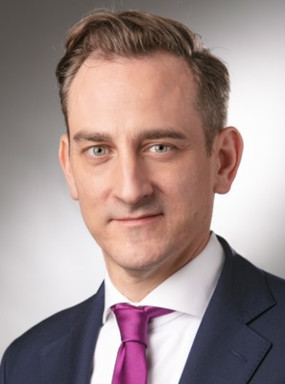

Dr. Pascal van Overloop
Dr. Pascal van Overloop works for Microsoft, integrating digital technologies for defense and intelligence. Previously, he spent ten years advising national and international customers in the defense sector on possible scenarios, the required capability portfolio in all dimensions and domains, and the adaptation of future technologies. During his active officer career, he has not only been experiencing the operational requirements of modern military missions, but was also able to contribute to research, teaching and consulting on the management and future development of the Bundeswehr.
Software-defined Defense and AI – Operational Insights from Ukraine
The TIME magazine, known for its iconic cover illustrations, claimed in February 2024 the ongoing war in Ukraine to be the first AI war. More than ten years of hybrid and kinetic warfare give an impression of the technological dynamics that shape the current and future operational environment. This includes a shift towards Dev(Sec)Ops, merging software and hardware, AI integration, and off-the-shelf solutions, which are described in this session.
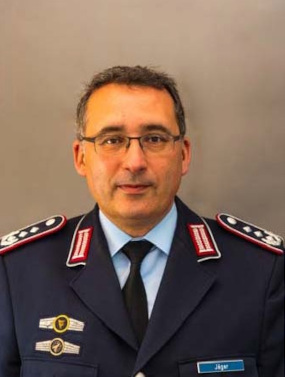
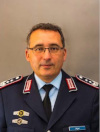
Michael Peter Jaeger
- 1990 Joined the German Air Force, Roth
- 1990 – 1991 Officer candidates’ course, Air Force Officer School, Fuerstenfeldbruck
- 1991 – 1995 Study of Computer Science at the University of the Bundeswehr, Munich
- 1995 – 1999 IT-Officer at German Air Force Programming Centre, Erndtebrueck
- 1999 – 2002 Chief Programmer NADGE, NATO Programming Centre, Glons, Belgium
- 2002 – 2005 Staff officer, Tactical Data Link Management, IT-Office Bw, Koblenz
- 2005 – 2007 Staff officer, Network Centric Warfare, CD&E, FMoD IT Division, Bonn
- 2007 – 2008 9th General Staff Course at Spanish Command and General Staff College, Madrid, Spain
- 2008 – 2009 Staff officer, Project Officer German Space Situational Awareness Centre at German Air Force Development Centre, Koeln
- 2009 – 2014 Executive Officer, NATO Airborne Early Warning & Control Programme Management Agency, Brunssum, Netherlands
- 2014 – 2016 Commander of German Air Force Systemcentre 25, Erndtebrueck
- 2016 – 2017 Executive Officer Implementation Office Cyber & Information Domain Service, FMoD, Berlin
- 2017 – 2018 Personal Assistant to Chief of Cyber & Information Domain Service HQ, Bonn
- 2018 – 2020 Branch Head IT Concepts&Plans, Cyber & Information Domain Service HQ, Bonn 2020 – 2021 Chief of Staff, German Forces Software Competence Centre, Euskirchen
- 2021 – 2022 Deputy Branch Head CIT I 3 - Cyber/IT Portfoliomanagement, Plans & Architecture, FMoD DG Cyber/IT, Berlin
- 2022 – today Branch Head CIT I 3 - Cyber/IT Portfoliomanagement, Plans & Architecture, FMoD DG Cyber/IT, Berlin
The German Bundeswehr is adapting a new paradigm for IT architectures that will include a modular Software Architecture and a DevSecOps based development process. This modern architecture is necessary to counter ever changing threats in todays conflicts. The German Bundeswehr has worked closely together with German industry to realize this approach.
Topics include:
- German approach to Software Defined Defence
- DevSevOps, an agile development framework for SDDBw
- AI/ML as essential part for speeding up the DevSecOps-Cycle


Paul Morris
Paul Morris is Global Sales Manager for Phonexia from the Czech Republic. Paul has for several years now been promoting the benefits of speech technologies, particularly voice biometrics, in both the governmental and enterprise arenas. Thanks, at least in part, to Paul, speech technologies have been successfully deployed in multiple parts of the world, including Scandinavia, the USA, South East Asia, the Middle East and Africa, for use by the military, law enforcement, correctional services and intelligence.
Using Speech Technologies in the Realms of Defense and Investigation
In this session, you will discover the latest capabilities of voice biometrics and speech recognition. Phonexia will present how these innovative technologies can help Security and Defence organizations respond rapidly to a wide range of threats.
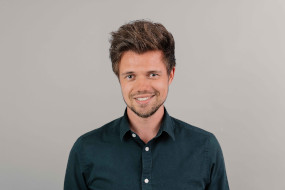

Sven Lüttich
Senior Business Case Manager - Innovation, PLATH GmbH & Co. KG
Sven Lüttich started his professional career as an electronics technician for devices and systems in the Rail Automation division. After completing his technical business administration degree, he concentrated on sales tasks and specialised in international supply and pricing strategies. At the same time, he successfully completed a bachelor's degree in business administration and a master's degree in business development. He has been working as a Business Case Manager at PLATH Systems & Integration since 2019. In this position, he is responsible for innovative topics such as "Cyber Threat Intelligence" and "Joint Intelligence", while also dealing with current technology trends such as artificial intelligence and software-defined intelligence.
In a world of increasingly complex crisis scenarios, reconnaissance requires one thing above all: reliable, scalable applications that generate the right situational picture in every situation. We are working on cross-system solutions that use the central, scalable AI unit, which uses artificial intelligence to improve the performance of the connected systems, reduce the operator's workload and accelerate the OODA loop. Such a system can, for example, include our high-performance, compact COMINT system NEMO, which can be used land-based, naval, airborne or in shelters.
We can't wait to tell you more about it at AOC Europe in Oslo and will show a use case of how the AI unit can lead to improved reconnaissance results in ground-to-air cross-domain operations with a UAV.
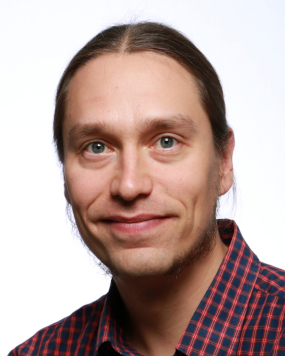

Taneli Riihonen
Taneli Riihonen received his D.Sc. degree in electrical engineering (with honors) from Aalto University, Helsinki, Finland, in 2014. He is a tenure-track Associate Professor at Tampere University, Finland, and a First Lieutenant in the Finnish Defence Forces' reserve. He received the Finnish technical sector's award for the best doctoral dissertation of the year in Finland and won the EDA Defence Innovation Prize 2020. His research activity is focused on physical-layer analysis, link-layer techniques and signal processing for all kinds of radio systems from consumer and commercial domains to defense and security with current interest in the evolution of 6G technology.
In-Band Full-Duplex Radio Military Applications
This presentation investigates what an in-band full-duplex (IBFD) radio is and how it brings new and even revolutionary capabilities to both radio
communications and electronic warfare.
IBFD radio has the potential to double spectrum efficiency in military and civilian radio networks and, as the technology becomes more widely
deployed, especially in future 6G networks. This doubling of spectrum efficiency is significant. However, as data transmission becomes increasingly
wireless, there will inevitably be a shift from static spectrum sharing to dynamic spectrum management between civilian and military radio systems.
The demand for spectrum for 5G and future 6G networks is already so high that spectrum previously reserved for military use must be made available,
at least partially, for mobile communications when it is not being used for military purposes.
In addition to spectrum efficiency, significant new capability will be gained in electronic warfare. IBFD radio allows the radio transmitter and
receiver to work simultaneously. In practice, this enables real-time information on whether a fast follower-jammer has entered on the frequency in
use, or whether the frequency in use is otherwise interfered. In this case, extremely fast cognitive spectrum management can replace jammed or
otherwise poorly performing frequencies with new ones. In addition, IBFD radio can simultaneously receive information from its own forces and
transmit jamming signal to prevent the enemy forces from operating.
IBFD radio can be seen as a new hardware generation of software-defined radios. It can bring new capabilities and performance to the battlefield.
Until the technology is integrated into every military radio, it could very likely be applied, for example, as a technique to mitigate interference
between different radio networks in military vehicles. Another use case example mentioned earlier could be a stand-alone device that allows a convoy
of vehicles to maintain its own radio communications while intelligently jamming enemy roadside bombs or swarms of drones.
The use of IBFD radio technology in electronic warfare could improve the effectiveness of jamming and save resources if, for example, separate
long-range jamming was abandoned and jamming was carried out locally in a simultaneous manner with radio transmission. In a high-flying vision, any
combat net radio could take part in electronic warfare operations if it had the resources to do so.
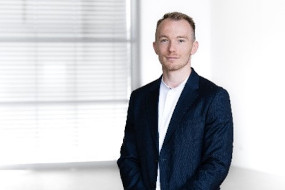

Antoine Vignol
Antoine Vignol has been working at INNOSYSTEC GmbH in Salem since 2022. After his military training at the French Army Military Academy of Saint-Cyr and his academic degree (MA) at the University of the Federal Armed Forces, he served in the French armed forces and the French intelligence agencies. Today he works as a pre-sales manager at INNO. Thanks to his extensive domain experience, he acts as a product consultant for our customers in the intelligence and military sectors. From requirements elicitation to customer support and support in project management and implementation of product training: For our customers Antoine Vignol is not only a contact, he´s a sparring partner at eye level.
How to deal with modern challenges of SatCom Monitoring, Analysis and Intelligence Management to maximize Situation Awareness
Due to the increasing use of Ka- and Ku-Band signaling, which lead to severe regional restrictions in signal availability, decentralization and the
associated logistical challenges are becoming a focus of the development of modern SatCom monitoring systems.
The next step after data collection is to identify relevant information out of Mass Data in complex operational environments and crisis areas.
Therefore, security organizations require best-of-breed technologies enabling them to speed up the Intelligence Cycle, and providing Actionable
Intelligence to best support decision-making processes.
This presentation addresses how SatCom Monitoring solutions based on software-defined radio technology can help to deal with modern challenges of
SatCom Monitoring and how to get the best possible Situation Awareness from Mass Data Analytics.
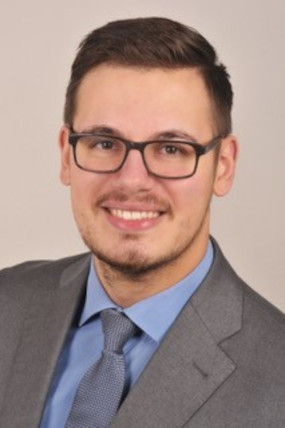
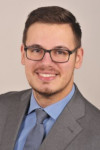
Florian Woelke
- Sales Manager for the SatCom Monitoring portfolio at Rheinmetall Electronics GmbH in Bremen, Germany, since March 2023
- Responsible for customers in Scandinavia and the MENA-region
- Business Management studies in Bremen
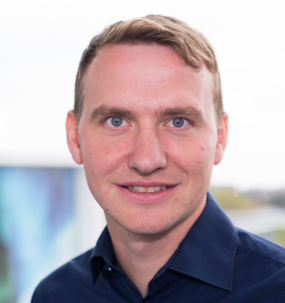

Dr. Hendrik Lieske
CV: Dr. Hendrik Lieske is a Product Manager at Saab Deutschland GmbH for Airborne EW solutions including emerging AI technologies. During his seven years at Saab, he gained extensive experience in the field of EW by holding various positions such as systems engineering for COMINT solutions, algorithm development for non-cooperative radio receivers, and technical project lead for a radar warner receiver simulator. He studied electrical engineering at Dresden University of Technology (TUD) and holds a PhD degree from Friedrich-Alexander-University Erlangen-Nürnberg (FAU) in the field of wireless communication engineering.
AI in SIGINT Domain - From signal identification to operator support & system tasking
State-of-the art acquisition systems for strategic radio reconnaissance have a high level of automation, which essentially reduces the interaction
effort for human operators to mission planning and data analysis. This development has been made possible by rapid advances in IT technology in
recent decades, for example through multi-core processors, faster analog-to-digital converters, increasing data throughput and price decline in
storage capacity.
Recent advances in the field of machine learning open the door to the next evolutionary step. Using an exemplary processing chain for a
communication intelligence (COMINT) system, the talk outlines both potential and challenges that the introduction of AI-based methods entail.
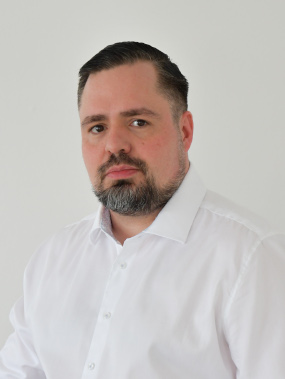
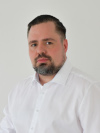
Toni Liebschwager
Former German Army officer Toni Liebschwager now excels as Director of Presales at Schönhofer Sales and Engineering, a renowned provider of turnkey solutions for big data analysis. With his nearly two decades of defense sector experience, public sector consulting prowess, and hands-on experience in multi-domain operations, he expertly guides customers in shaping their operational requirements and strategic initiatives.
Toni holds a master’s degree in Aerospace Engineering from the university of Federal Armed Forces in Germany.
Software Defined Defense (SDD) - Enabling Multi-Domain Operations invites the audience to explore the transformative power and applicability of SDD in the context of multi-domain operations, and how it promises to reshape defense methodologies. It delves into the intricacies and potential of following this technological design paradigm. The presentation highlights the key challenges and focal points of SDD, illustrating its functionality within the wider sphere of multi-domain operations. It furthermore outlines the success factors that are critical for leveraging SDD in order to augment these operations effectively.
In a world, where multi-domain operations are emerging and in a constant state of flux, SDD proposes adaptive solutions that can help to actively steer this change.


Dr. Markus Hosbach
Dr. Markus Hosbach is a project manager for evaluation of military AI systems at IABG mbH in Ottobrunn, close to Munich, Germany.
Dr. Hosbach earned his PhD in 2020 from the University of the German Federal Armed Forces in Munich and his M.Sc. in 2014 from the Technical University of Munich. He developed image processing algorithms to study cavitation damage in microchannels.
In the recent years at IABG mbH, he has led several projects in the field of AI development and AI evaluation in military context and is responsible for the development of a software framework for AI evaluation.
Software framework for the evaluation of AI applications in military systems
The technical development of artificial intelligence (AI) has made great progress in recent years. The use of AI in military systems enables an
increase of their performance in many ways. This presentation illustrates our goal to generate trust in artificial intelligence through an
independent evaluation and to support during the conformity assessment.
To carry out consulting we use and further develop our software framework for AI evaluation: safeAI-kit. With this framework, we want to provide
customers an evaluation of any AI system. Therefore, we also consider upcoming AI regulations and standards which are essential for a future
compliance and conformity assessment process. Due to our active contribution in AI standardization bodies on national (DIN/DKE), European
(CEN/CENELEC) and international levels we know about the latest developments in this regard.
Electronic Support Measures (ESM) are used to receive and analyze transmissions from reconnaissance or e.g. missile guidance radars. Electromagnetic
Warfare systems of the latest generation may use AI to detect and classify emitter profiles and their operating status. Our evaluation framework
offers possibilities to evaluate unsupervised, supervised AI systems for classification and regression tasks. We therefore include an expansion of
our evaluation capability for Electromagnetic Warfare in our plan for future developments.
The current presentation illustrates an AI system that solves computer vision (CV) tasks. To perform the evaluation of, for example, such an object
detection model, the safeAI-kit only requires image data with bounding box annotations and blackbox access to a trained model. The blackbox access
is sufficient for most of the safeAI-kit methods because the evaluation focuses primarily on the inference results. Therefore, direct access to the
model or retraining the model is not necessary. Nevertheless, certain methods can benefit from whitebox access to provide additional evaluation
details. The safeAI-kit introduces a comprehensive five-dimensional analysis. These dimensions encompass dataset analysis, performance and
robustness evaluation, uncertainty quantification, and explainability examination, all aiming at providing a thorough understanding of the model’s
behavior and capabilities.
General Info on AOC Europe
Find information on travel and the venue: https://www.aoceurope.org/travel-venue
Do you need a hotel reservation? Please contact the official agency of the event: https://www.aoceurope.org/book-hotel